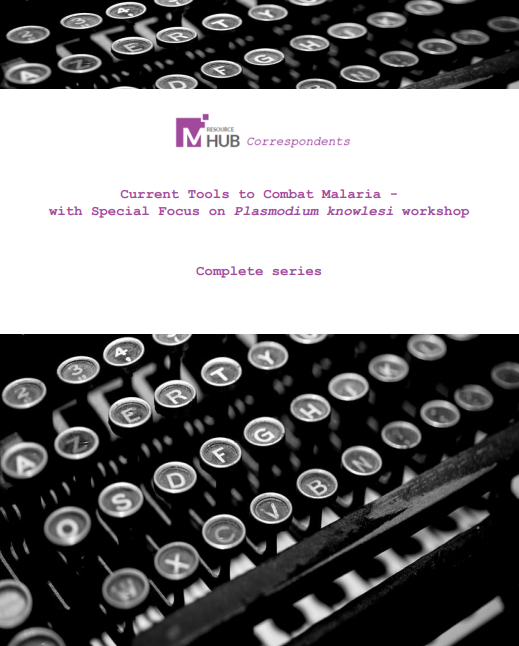6th International Conference on Plasmodium vivax Research (ICPvR) – 2017: Day 1
Sunday, 11th June 2017
Published: 10/12/2018
This report is brought to you by the MESA Correspondents Rosalind Howes, and Hernando del Portillo.
THEMES: THEMES: P. vivax
MESA Correspondents bring you cutting-edge coverage from the 6th International Conference on Plasmodium vivax Research
Day 1: Pre-meeting courses and Opening ceremony
Participants at this 6th international conference dedicated to Plasmodium vivax malaria research are being treated to the stunning surrounds of the Rio Negro, just upstream of the confluence with the Rio Solimões and the birth of the awesome Amazon river. This exceptional location is no doubt contributing to the buzzing atmosphere as a record 405 colleagues reunite for this conference, enabled in part by an impressive 41 travel awards for students and early-career scientists from across the world.
A busy day of diverse pre-meeting courses overseen by Stefanie Lopes and Carmen Fernandez-Becerra has whet the appetite for the main meeting. Dynamic session organisers (see Programme) triggered lively discussions reminding participants of the key and unique features of P. vivax malaria, and of the challenges and dilemmas confronting the P. vivax community and country programmes in particular.
A morning session led by Rogério Amino, Mary Galinski and Letusa Albrecht covered updates in parasite biology, animal models and imaging advances. Concurrently, sessions provided overviews of conducting epidemiological studies (Ivo Mueller/Ingrid Felger/Wuelton Monteiro) and clinical trials (Quique Bassat/Ric Price/André Siqueira), with participants being challenged to design studies of their own.
Afternoon sessions included guides to “omics” data and modelling studies (Jessica Kissinger/Michael White), with the latter emphasising the importance of epidemiological and biological parameters for appropriate model design. “Real-world” reality was also emphasised in relation to the effectiveness of tools available for P. vivax elimination (Kevin Baird/Marcelo Ferreira/Paola Marchesini). Finally, early-career scientists participated in a session led by Marcel Hommel and Judith Recht about scientific publishing and the importance to young scientists of learning to critically evaluate others’ work.
The conference’s official Opening Ceremony was warmly presided over by the conference host, Marcus Lacerda. The evening included an overview of the history of this P. vivax conference series, and a video documenting personal testimonials of the clinical and socio-economic impact of malaria on patients and healthcare workers in the Amazon region, an area of riverine communities dominated by P. vivax malaria. While the challenges remain significant, an optimistic outlook to the future concluded that is it now #timetogoforvivax.
The President of Brazil’s most important health research institution, the Oswaldo Cruz Foundation (Fiocruz), Nísia Trindade Lima, shared that 2017 marks the centennial anniversary of Oswaldo Cruz’s death, setting the fitting challenge to conference participants of addressing his vision of achieving development through improved health, and the importance of the translational alliance between scientific knowledge and public health policy. Marcel Tanner, as Chair of the WHO’s Scientific Advisory Group on malaria elimination and eradication, reinforced this latter point to promote accelerated public health impact and the emphasised value of the research generated by conference participants on informing the group’s analyses and recommendations.
Finally, Kevin Baird regaled the audience with his account of the historical legacy on the contemporary status of P. vivax in his plenary Grassi & Feletti opening lecture: “After seventy years of dormancy, Plasmodium vivax research awakens”. While seven decades of vibrant and active research followed the parasite’s original description, the parasite’s clinical phenotype appeared constrained to the pre-Laveran label of “benign tertian malaria”. Subsequent clinical data emergent primarily from the infamous neurosyphilis therapy era contradicting this label appear ignored by Kitchen’s 1949 landmark publication, which, coincident with the emergence of antibiotics against neurosyphilis, DDT for vector control and synthetic drugs for blood-stage infection marked the start of a seventy year dormancy in P. vivax research funding and prioritisation.
An optimistic Kevin Baird then bore witness to the impact of the current community’s efforts since 2000 to reassess false perceptions regarding the significance of the relapsing malaria parasite. Nevertheless, important challenges remain for the future of P. vivax research, including optimisation of therapeutic and diagnostic tools to optimise case management at the peripheral level. Under-documented drug resistance, the complexities of G6PD deficiency and the management of patients non-eligible for primaquine therapy remain key challenges; while the recently identified role of variable CYP2D6 phenotypes further contributes to the reduction of therapeutic effectiveness of existing drugs. Current appreciation of the importance of P. vivax, as indicated by this conference’s programme, suggests the next chapter in this parasite’s history is now being written.
Official speeches were followed by an exuberant traditional Brazilian party. Thank you to all the conference’s organisers and sponsors for this fantastic start to the 6th ICPVR. It is now #timetogoforvivax.
This blog was written by Rosalind Howes and Hernando del Portillo as part of the MESA Correspondents program, and is cross-posted on Malaria World.
Published: 10/12/2018
This report is brought to you by the MESA Correspondents Rosalind Howes, and Hernando del Portillo.
THEMES: P. vivax

